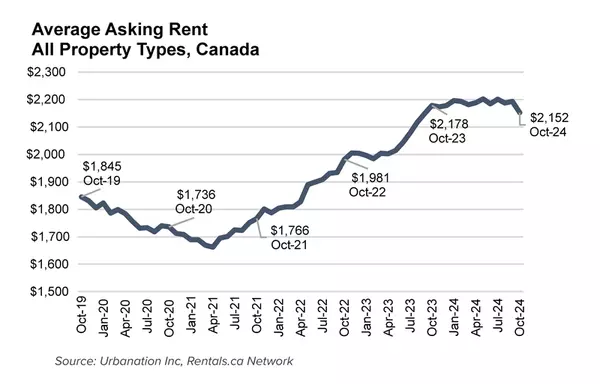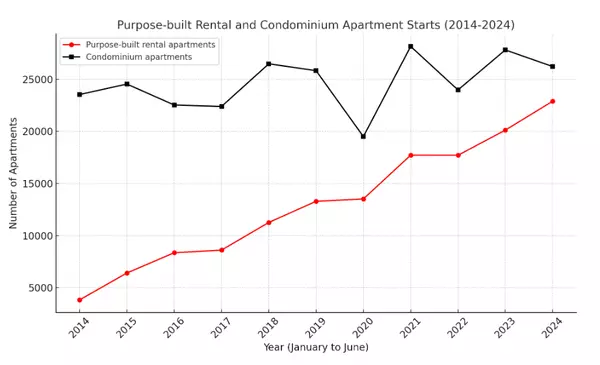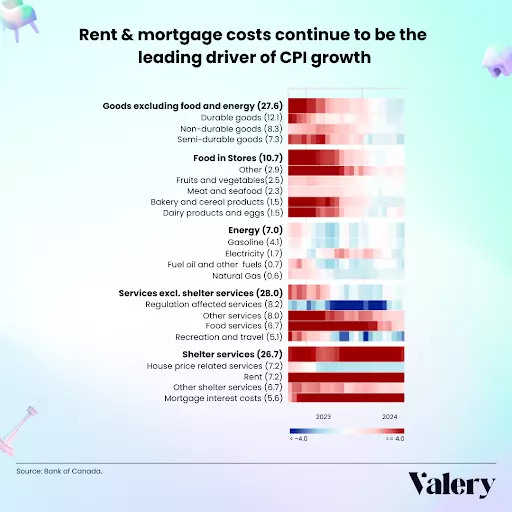
Living in a staged home: 7 easy tips for sellers to maintain a show-ready home with ease and comfort
Welcome to your regular staging advice column designed exclusively for real estate professionals. Whether you’re grappling with how to enhance the visual appeal of your listings or seeking innovative strategies to captivate your target audience, you’ve come to the right place. This is your opportunity to pose any and all staging-related questions and receive expert advice, for free. No query is too big or small — if it’s about elevating the look of your real estate, we want to hear it and we want to help! Email your questions to ninadoiron@isodesign.ca As a real estate agent, one of the key challenges you may face when helping clients sell their homes is ensuring the property remains show-ready at all times. While staging is an excellent way to present the home in its best light and attract buyers, it can be difficult for sellers to live in a staged home, especially when balancing busy lives. But don’t worry — there are plenty of strategies to help sellers keep their homes ready for showings while minimizing stress and maintaining comfort. Here, we’ll explore tips for sellers on how to live comfortably in a staged home, keep the property show-ready and avoid potential pitfalls. With your expert guidance, your clients can increase their chances of selling quickly and for top dollar. Why it’s important to keep a staged home show ready First, it’s important to emphasize to sellers why keeping their homes in pristine condition during the listing period is essential. A staged home is designed to appeal to the emotional triggers of potential buyers. A clean, well-organized space helps buyers imagine themselves living in the home, which can lead to quicker offers and higher sale prices. However, one messy or cluttered space can break that emotional connection for buyers. When they walk into a home that’s untidy or doesn’t look like the photos they saw online, they can become distracted by the clutter and may focus on negatives rather than the home’s best features. That’s why sellers must maintain the home in show-ready condition at all times. Tip #1: Create a daily routine to stay show-ready A daily cleaning and tidying routine can help sellers keep their homes looking fresh without the need for a deep clean every time there’s a showing. Encourage your clients to set aside 10-15 minutes in the morning before heading off to work and another 10-15 minutes in the evening to quickly tidy up common areas, wipe down countertops and do a quick vacuum or sweep if needed. This daily routine can prevent messes from piling up and help your clients feel more in control of their space. Consider sharing a checklist of high-priority tasks to focus on daily, such as: making the beds (use photos taken on staging day as a reference to restyle the bed) clearing off countertops putting away toys, clothes and personal items wiping down kitchen and bathroom surfaces emptying the trash checking for pet messes or odours Tip #2: Pre-pack personal and non-essential items Encourage sellers to think of the staging process as the first step of moving. Ask them to pack away personal items, non-essential decor and excess furniture that could make the space feel cluttered or personalized. By doing this in advance, they’ll have fewer items to worry about maintaining and will make the home feel more neutral for potential buyers. Not only does this help declutter, but it also reduces the number of personal belongings sellers have to organize every day. Plus, it gives them a head-start on moving once the home is sold! Tip #3: Implement organizational systems Having organizational systems in place can make a world of difference for sellers living in a staged home. Encourage them to invest in storage solutions like decorative baskets, bins and drawer organizers to keep essential items easily accessible but hidden from view. Here are a few quick organization ideas that can help: baskets for storing items like shoes, blankets and kids’ toys in living areas bins or baskets inside closets to hide clutter drawer organizers in bathrooms and kitchens to keep counters clear but necessities closeby decorative trays on coffee tables or countertops to display essentials (like remote controls) in a stylish, controlled way Tip #4: Designate ‘off-limits’ areas If possible, recommend that sellers designate one or two rooms or spaces where they can store personal items and daily clutter when showings are scheduled. A basement storage room, garage or even an out-of-the-way guest bedroom can serve as a quick spot for stashing toys, laundry or paperwork before buyers arrive. Remember, this doesn’t mean that they should toss these items into the space — these storage spaces should always be neat and tidy. This strategy can ease stress and provide a sense of relief for families who still need a bit of extra space for daily life but want to maintain the overall appearance of the home. Tip #5: Be prepared for last-minute showings Showings can often be scheduled with little notice, which can catch sellers off guard, especially during busy weekends. To help them prepare for this, encourage your clients to keep a “showing emergency kit” ready with supplies they can use for last-minute touch-ups. The kit could include: a microfiber cloth and multi-surface cleaner for quick wipe-downs a lint roller for furniture air fresheners or room sprays to neutralize odours a laundry basket to quickly gather and hide personal items a small vacuum or broom for fast floor touch-ups By having these essentials ready to go, sellers can clean up quickly and feel more confident when a last-minute showing request comes in. Tip #6: Keep pets and pet items under control While many buyers are pet lovers, not everyone appreciates the presence of pets during a showing. To appeal to as many potential buyers as possible, advise your clients to manage their pets’ presence and belongings during the listing period. Pet management could include: arranging for pets to be taken out of the house during showings, either to a neighbour’s home, to daycare or on a walk keeping litter boxes, pet beds and food bowls clean and out of sight neutralizing pet odours with air fresheners or odour-eliminating sprays Tip #7: Maintain outdoor spaces Don’t forget about curb appeal! The exterior of the home is just as important as the interior, so sellers should keep outdoor spaces clean and tidy as well. This could mean mowing the lawn, sweeping the porch, clearing walkways and even adding seasonal plants or fresh flowers to the entryway. Yard maintenance should be done on a weekly basis. If sellers are too busy for this, encourage them to consider outsourcing the task to a local yard maintenance company. It’s important to remember that the condition of the outdoor space is often a good representation of the indoor space. Both should be show-ready at all times. Why it’s worth the effort While it may seem like a lot of work to maintain a staged home, the effort is well worth it. Homes that are kept clean, clutter-free and neutralized for buyers tend to sell faster and for higher prices than those that aren’t. By following these practical tips, sellers can live comfortably in their staged home and ensure that it remains show-ready, allowing them to maximize the potential of their sale. As a real estate agent, your role is crucial in guiding sellers through this process and providing them with the support and advice they need. The result? A smoother selling experience and happier clients. Got home staging questions for a future column? Submit them to ninadoiron@isodesign.ca

What do Canadians want most in a home? Buyers still dream of renovated, suburban single-family houses
A new survey from Wahi that explored what type of home Canadians would most like to buy reveals that many homebuyers still dream of owning a renovated single-family home in the suburbs, despite ongoing affordability challenges. Single-family homes preferred among nearly two-thirds of homebuyers; most want suburban living The survey found that 64 per cent of potential homebuyers prefer single-family homes, particularly those that are larger, renovated and located in suburban (38 per cent) or urban (34 per cent) neighbourhoods. Three-bedroom homes were the most popular option (43 per cent), with only 28 per cent of respondents opting for rural living.What’s more, a previous Wahi poll found that despite elevated interest rates and home prices, about 20 per cent of Canadians say they’ll probably or may buy a home in 2024. Regional and demographic differences However, regional differences emerged. In provinces with more affordable housing markets, like Saskatchewan/Manitoba (82 per cent) and Atlantic Canada (77 per cent), the preference for single-family homes was even stronger. Atlantic Canada was also the only region where most respondents (58 per cent) wished to live in a rural area.Meanwhile, high-cost provinces like British Columbia saw a lower demand for single-family homes, with only 52 per cent of respondents choosing this option.“Canadian cities like Vancouver, Montreal and Toronto all have great urban cores with lots to do, so some potential homebuyers may also choose condominiums to be closer to the action,” explains Wahi CEO Benjy Katchen.Younger Canadians (18-34) are most likely to prefer single-family homes, with 67 per cent wanting this type of property, though they also prefer urban settings (34 per cent), while older generations (55+) are more inclined to downsize, with only 50 per cent choosing single-family dwellings. Turnkeys favoured over fixer-uppers When it comes to the condition of their future homes, the majority of Canadians (64 per cent) would prefer a renovated property, with older buyers (55+) especially drawn to turnkey homes to avoid the hassle of renovations.About 23 per cent would consider a fixer-upper, but only 2.0 per cent are interested in a complete tear-down. While the dream of homeownership has evolved, Wahi’s survey shows that Canadians still prioritize suburban living and single-family homes, even in today’s competitive real estate market. Enjoying this article?Get the latest REM articles in your inbox 3x week so you stay up to date on the latest in the Canadian real estate industry Success! Email Subscribe The post What do Canadians want most in a home? Buyers still dream of renovated, suburban single-family houses appeared first on REM.

What is the cheapest place to live in Ontario?
As someone who’s lived in Ontario for years, I’ve seen firsthand how housing costs can vary dramatically across the province. With the rising cost of living, many people are searching for affordable places to call home. That’s why I’ve decided to explore the cheapest places to live in Ontario.In this article, I’ll share my insights on the most budget-friendly cities and towns in the province. We’ll look at factors like housing prices, cost of living, and job opportunities to help you find the perfect spot to settle down without breaking the bank. Whether you’re a student, young professional, or retiree, there’s an affordable Ontario community waiting for you.Understanding Affordability in OntarioAffordability in Ontario varies significantly across different regions and cities. To comprehend the true cost of living in this diverse province, it’s crucial to examine various factors that contribute to overall affordability.Cost of Living IndexThe cost of living index in Ontario fluctuates depending on the location. Toronto and Vancouver top the charts with higher living costs, while smaller cities and rural areas offer more budget-friendly options. This index encompasses essential expenses:HousingTransportationFoodClothingUtilitiesHealthcareCities like Oshawa and Hamilton boast lower average home prices compared to Toronto, making them more affordable alternatives for those seeking cheaper living arrangements.Factors Affecting AffordabilitySeveral key factors influence affordability in Ontario:Housing Costs: Property prices and rental rates vary widely across the province. Toronto’s housing market remains one of the most expensive, while cities like Oshawa and Hamilton offer more affordable options.Transportation: The cost of owning and maintaining a vehicle can significantly impact overall affordability. Cities with efficient public transportation systems, such as Ottawa, can help reduce these expenses.Job Opportunities: Employment prospects and average salaries differ between regions, affecting residents’ ability to afford local living costs.Taxes: Provincial and municipal tax rates can vary, impacting disposable income and overall affordability.Food and Groceries: The cost of essential items can differ between urban and rural areas, with larger cities often having higher prices.Utilities: Energy costs and other utility expenses may vary depending on the region and type of housing.Healthcare: While Ontario provides universal healthcare, additional medical expenses can affect affordability for some residents.By considering these factors, individuals can make informed decisions about the most affordable places to live in Ontario that suit their specific needs and budget constraints.Top Affordable Cities in OntarioOntario offers several affordable cities for those seeking a lower cost of living. These cities provide a balance of affordability and quality of life, making them attractive options for various demographics.Thunder BayThunder Bay, located in northwestern Ontario, stands out as one of the most affordable cities in the province. The average home price here is around £200,000, significantly lower than many other Ontario cities. Renters can find one-bedroom apartments for approximately £1,000 per month. Thunder Bay’s affordability extends beyond housing, with lower costs for groceries, transportation, and utilities compared to larger urban centres.WindsorWindsor, situated in southern Ontario, is another budget-friendly option for residents. The city boasts an average home price of about £500,000, making homeownership more attainable than in Toronto or Ottawa. Renters can expect to pay around £1,036 for a one-bedroom apartment. Windsor’s proximity to the US border offers unique employment opportunities and access to cross-border shopping, potentially reducing overall living expenses.LondonLondon, in southwestern Ontario, combines affordability with excellent social services. The average home price in London is approximately £481,013, while the monthly rent for a one-bedroom apartment averages £1,478. The city’s robust healthcare system and quality educational institutions make it an attractive option for families and students. London’s diverse economy also provides various job opportunities across multiple sectors.SudburySudbury offers a blend of urban amenities and natural beauty at an affordable price point. The city’s housing market is considerably more accessible than larger Ontario cities, with lower average home prices and rental costs. Sudbury’s economy, traditionally based on mining, has diversified in recent years, creating job opportunities in healthcare, education, and technology sectors.Sault Ste. MarieSault Ste. Marie, located on the shores of Lake Superior, is one of Ontario’s most affordable cities. The cost of living here is significantly lower than in southern Ontario cities. Housing prices are particularly attractive, with both buying and renting options being more budget-friendly. The city’s strong manufacturing sector, combined with growing opportunities in tourism and technology, provides a stable economic foundation for residents.Most Affordable Smaller TownsWhile larger cities in Ontario often command higher living costs, several smaller towns offer affordable alternatives without sacrificing quality of life. These communities provide a balance of urban amenities and rural charm, making them attractive options for those seeking budget-friendly living in the province.TillsonburgTillsonburg, nestled in Southwestern Ontario, is a prime example of affordable small-town living. This charming community boasts:A strong sense of community and frequent local eventsThe annual Tillsonburg TurtleFest, a popular attractionA harmonious blend of rural living and urban conveniencesSignificantly lower average house prices compared to larger citiesWith its affordable housing market and community-focused atmosphere, Tillsonburg stands out as an excellent choice for those looking to stretch their budget without compromising on lifestyle.ArnpriorArnprior, situated in the picturesque Ottawa Valley, offers a compelling mix of affordability and opportunity:Population: 11,305Average house price: £482,732 (as of March 2024)Recreational opportunities:Beaches along the Ottawa and Madawaska riversExcellent fishing spotsBoating and water activitiesArnprior’s combination of affordable housing, diverse job market, and natural attractions makes it an appealing option for those seeking a balanced and budget-friendly lifestyle.Carleton PlaceCarleton Place, a historic town in Eastern Ontario, offers a unique blend of small-town charm and modern conveniences:Proximity to Ottawa (approximately 50 km)Rich heritage with well-preserved 19th-century architectureAffordable housing options compared to nearby urban centresAccess to natural amenities:Mississippi River for water activitiesExtensive trail systems for hiking and cyclingGrowing local economy with a mix of small businesses and light industryThe town’s strategic location, coupled with its affordable living costs and historical appeal, makes Carleton Place an attractive option for those seeking a balance between small-town living and urban accessibility.Affordable Areas Near TorontoWhile Toronto’s housing market is notoriously expensive, there are still pockets of affordability in the Greater Toronto Area (GTA). I’ve identified two neighbourhoods that offer more budget-friendly living options without sacrificing access to urban amenities.East DanforthEast Danforth is a vibrant and diverse neighbourhood that’s become increasingly popular with young families and professionals. It’s characterized by its:Lower average home prices compared to central TorontoExcellent public transport links, including multiple subway stationsThriving food scene with a variety of international cuisinesAbundance of green spaces, including Monarch Park and East Lynn ParkStrong sense of community, with numerous local events and festivalsThe area’s mix of detached houses, semi-detached homes, and low-rise apartments provides options for various budgets and lifestyles.Keelesdale-Eglinton WestKeelesdale-Eglinton West is an up-and-coming neighbourhood that offers affordability and convenience. Its key features include:More affordable housing options, including detached homes and apartmentsOngoing development of the Eglinton Crosstown LRT, improving transit connectivityDiverse community with a rich cultural heritageProximity to York University and Humber College’s Orangeville CampusAccess to outdoor recreation at Coronation Park and Eglinton FlatsThis neighbourhood is ideal for students, young professionals, and families looking for a balance between urban living and affordability in the GTA.Key Considerations When Choosing a LocationWhen searching for the cheapest place to live in Ontario, it’s crucial to consider several factors that impact overall affordability and lifestyle. These key considerations will help you make an informed decision about where to settle in the province.Housing CostsHousing costs are a significant factor in determining affordability. In Ontario, the average rent for a one-bedroom apartment is £2,479 per month, with cities like Toronto and Ottawa being the most expensive. The average home price in Canada is £699,117, and Ontario is one of the priciest provinces. To find more affordable options, I recommend looking at smaller towns and cities away from major urban centres, where housing costs are typically lower.Job OpportunitiesOntario’s strong economy generates 37% of the national GDP, making it a hub for employment. The province is home to nearly 50% of all employees in high-tech, financial services, and other knowledge-intensive industries. When choosing a location, I suggest researching the local job market and considering your career prospects. Cities with diverse economies often offer more job opportunities across various sectors, including manufacturing, technology, and services.Quality of LifeQuality of life encompasses factors such as access to healthcare, education, recreational activities, and community amenities. When evaluating potential locations, I advise considering:Healthcare facilities: Proximity to hospitals and medical centresEducation: Quality of schools and access to higher education institutionsRecreation: Parks, community centres, and cultural attractionsSafety: Crime rates and overall community securityPublic transport: Availability and reliability of public transportation optionsCost of living: Prices for groceries, utilities, and other everyday expensesBy weighing these factors alongside housing costs and job opportunities, you’ll be better equipped to find an affordable location in Ontario that meets your needs and lifestyle preferences.ConclusionFinding the cheapest place to live in Ontario requires careful consideration of various factors. I’ve highlighted several affordable options across the province including smaller towns and cities as well as budget-friendly areas near Toronto. It’s crucial to weigh housing costs against job prospects quality of life and personal preferences. By exploring these diverse locations and evaluating your priorities you’ll be well-equipped to make an informed decision. Remember affordability is just one piece of the puzzle – finding a place that aligns with your lifestyle and goals is equally important for long-term satisfaction in your new Ontario home.
Categories
Recent Posts











